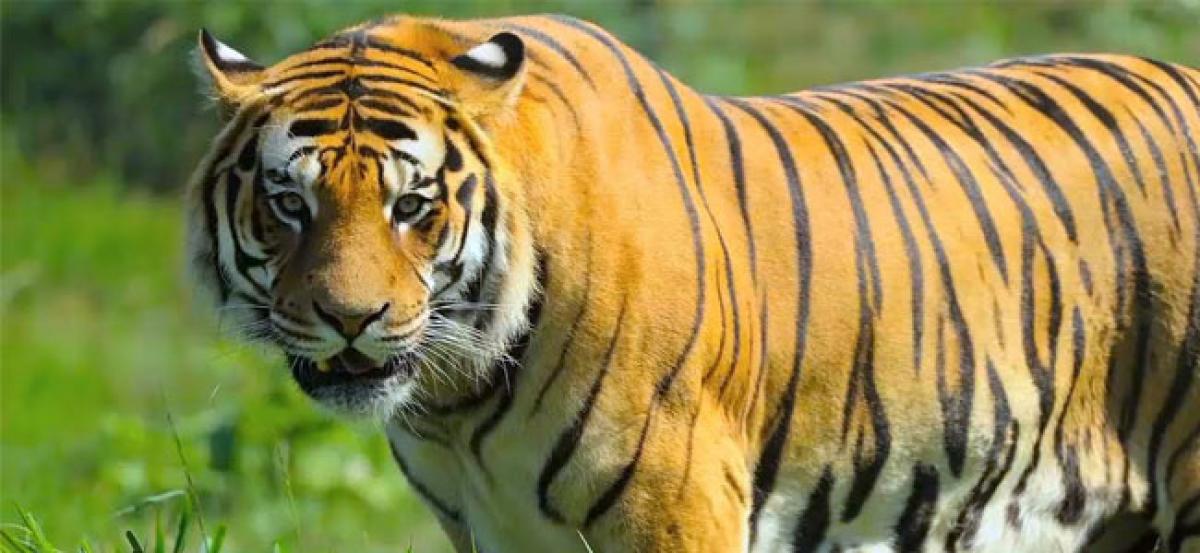Live
- Young Kabaddi Player Dies of Heart Attack During Match in Mandya
- Exciting Return of Santosh Trophy Football Tournament Kicks Off in Hyderabad
- Head Constable Dies by Suicide, Cites harssament by wife and inlaws
- Delhi BJP claims AAP govt will never pay women allowance like in Punjab
- India is 'Mother of Democracy': PM Modi
- ‘One nation, one election’ will undermine India’s federal structure: Mehbooba Mufti
- Vikram collaborates with director Madon Ashwin for ‘Chiyaan63’
- ‘Bachhala Malli’ trailer heightens anticipation
- Karnataka quota row: Backward Class forum chief warns Lingayat seer over 'tinkering with reservations'
- Tight security arrangements at Group-II examination centers District SP
Just In

Such news is so rare, it needs to be looked at a little more. After more than a a century of decline, the number of wild tigers is increasing for the first time. According to GNO World Wildlife Fund (WWF) and the Global Tiger Forum, there are 3 890 tigers living in their natural habitat. In 2010, during the last census there were 3 200 individuals.
Such news is so rare, it needs to be looked at a little more.
After more than a a century of decline, the number of wild tigers is increasing for the first time. According to GNO World Wildlife Fund (WWF) and the Global Tiger Forum, there are 3 890 tigers living in their natural habitat. In 2010, during the last census there were 3 200 individuals.
“For the first time after decades of constant decline, tiger numbers are on the rise. This offers us great hope and shows that we can save species and their habitats when governments, local communities and conservationists work together,” said Marco Lambertini, Director General of WWF International.
The meeting of tiger range governments at the 3rd Asia Ministerial Conference on Tiger Conservation this week is the latest step in the Global Tiger Initiative process that began with the 2010 Tiger Summit in Russia. Governments at that meeting agreed to the Tx2 goal to double wild tiger numbers by 2022.
“This is a critical meeting taking place at the halfway point in the Tx2 goal,” said Dr Rajesh Gopal, Secretary General, Global Tiger Forum. “Tiger governments will decide the next steps towards achieving this goal and ensuring wild tigers have a place in Asia’s future.”
Over the three day meeting, countries will report on their progress toward the Tx2 goal and commit to next steps. Prime Minister Modi will address the conference on the essential role tigers play as a symbol of a country’secological well-being.
“A strong action plan for the next six years is vital,” said Michael Baltzer, Leader of WWF Tx2 Tiger Initiative. “The global decline has been halted but there is still no safe place for tigers. Southeast Asia, in particular, is at imminent risk of losing its tigers if these governments do not take action immediately.”
Tigers are classified as endangered by the IUCN Red List of Threatened Species, threatened by poaching and habitat loss. Statistics from TRAFFIC, the wildlife trade monitoring network, show that a minimum of 1,590 tigers were seized by law enforcement officials between January 2000 and April 2014, feeding a multi-billion dollar illegal wildlife trade.
In order for countries to protect their tigers, it is essential that they know their tiger populations and the threats they face.
In 2014, tiger range governments agreed to announce a new global tiger estimate by 2016, based on full, systematic national surveys. However, not all countries have completed or published these surveys. The new minimum estimate of close to 3,900 tigers is based on the IUCN Red List of Threatened Species account for tigers, updated for countries where national tiger surveys have taken place since the IUCN assessment.
WWF and the GTF commend the tiger range countries that have updated their population figures since 2010 and encourage the remaining countries to complete and publish their population surveys as soon as possible.

© 2024 Hyderabad Media House Limited/The Hans India. All rights reserved. Powered by hocalwire.com







